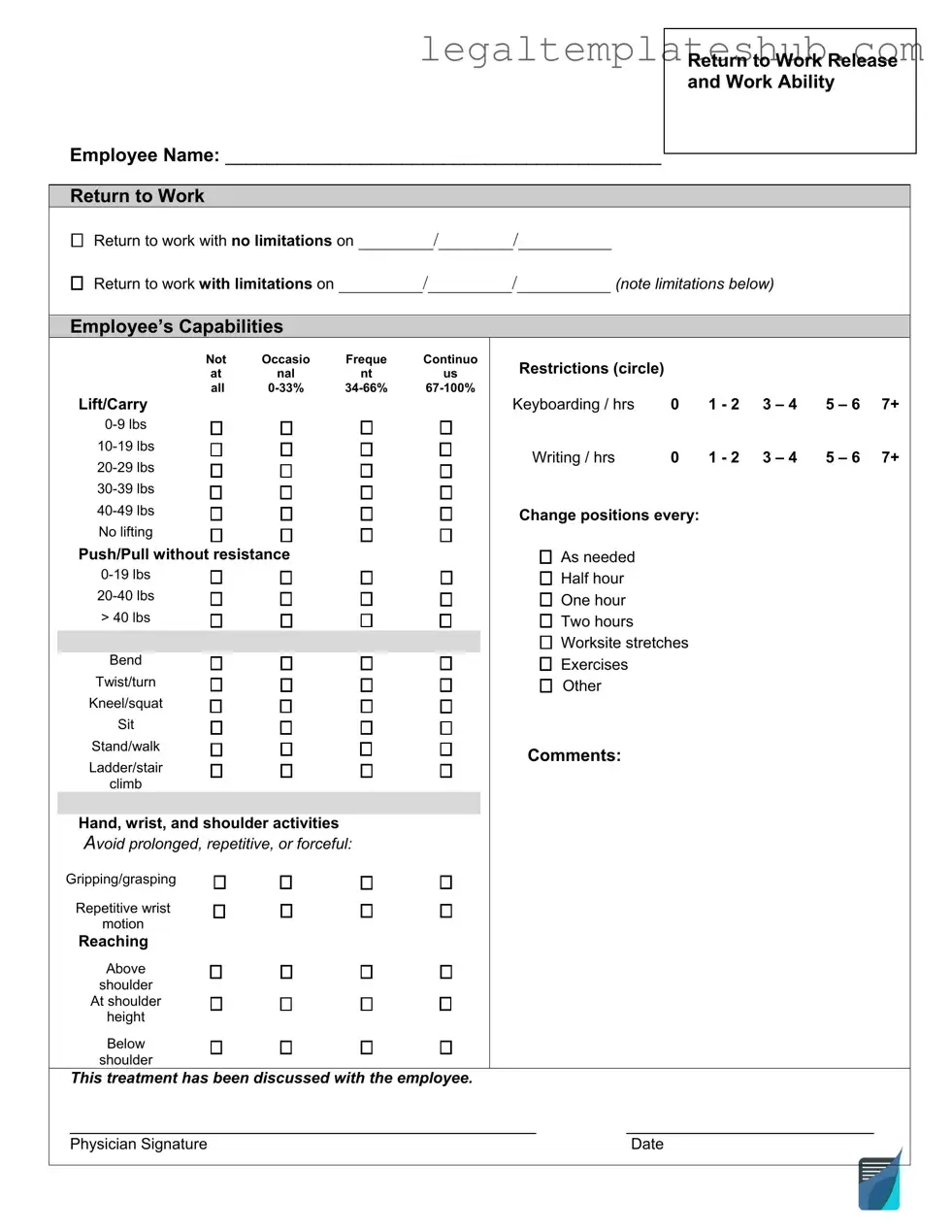Blank Work Release PDF Form
The Work Release form is a document that allows individuals to leave a correctional facility for employment purposes. This form is crucial for those seeking to maintain or regain their employment while serving their sentences. To ensure you meet the requirements, fill out the form by clicking the button below.
Access Editor
